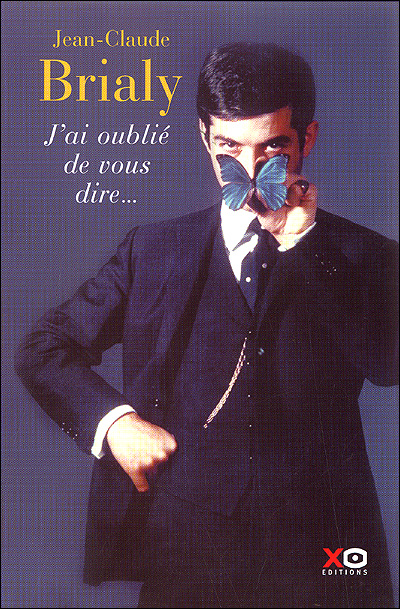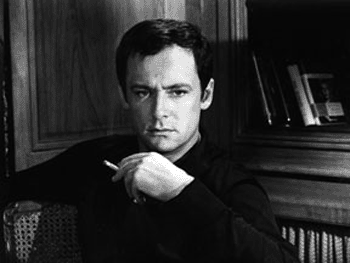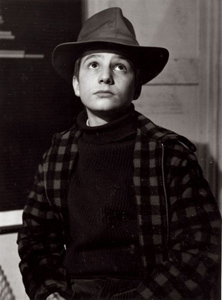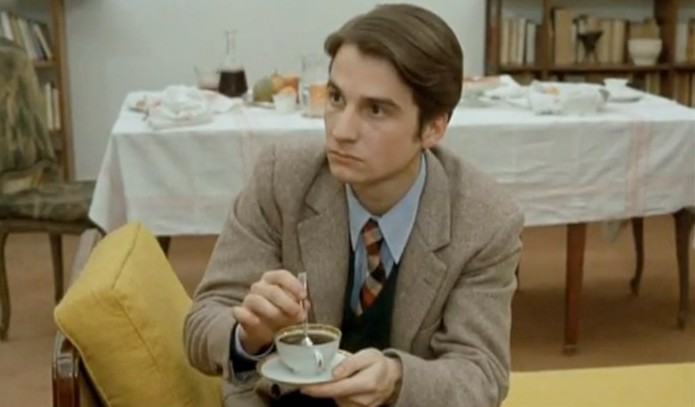Silent film actress Clara Bow is one of my all time favorite style icons. The actress epitomized everything that makes even the modern "it" girls of today so alluring. The height of the jazz age saw the invention of the movie star and Clara Bow was the "bad girl" of silent film.
Fall Inside My World
Friday, April 25, 2014
My Obsession with Clara Bow: The first "It" girl
Silent film actress Clara Bow is one of my all time favorite style icons. The actress epitomized everything that makes even the modern "it" girls of today so alluring. The height of the jazz age saw the invention of the movie star and Clara Bow was the "bad girl" of silent film.
Thursday, April 24, 2014
Nina Simone: The High Priestess of Soul
The High Priestess of Soul: Nina Simone
Singer Nina Simone's mysteriously soulful and haunting voice is what makes her collection of over 40 albums one of the most unique examples of vocal jazz. Simone had a style to match her music. She managed to exude a regal and eclectic jazz mystique. I find her brand of cool to be particularly original and iconic.
A Civil Rights activist her entire career, and rebel when it came to racial issues in the music industry, Simone had a look that could be said as part Nubian princess and part Black Panther. A look that can be found in lots of ethnic prints, bold jewelry, head dresses and tunics. One of my absolute favorite eclectic female icons of the late 20th century.
Tuesday, March 19, 2013
Thursday, March 7, 2013
Jack Kerouac: Style Icon of the Beat Generation
The Effortless Cool of Writer Jack Kerouac: Just Don't think Black and Berets...
Imagine yourself hunched over a typewriter in your apartment, tapping away on a 10-foot-long scroll of paper, going through endless notes you've written in an attempt to finally get your damn thoughts out. As prolific as he was, that was Kerouac's way of working. And, although he was originally met with criticism and had trouble finding a publisher, he would eventually become the voice of a generation — the beat generation.
He published often, but On The Road still stands out. Sections on drug use, homosexuality, and various taboo subjects (at the time, at least) made it that much harder for Kerouac to get the work published once he finished it in 1951; it didn't help that the manuscript was one continuous paragraph on that very long sheet roll. But once it eventually hit shelves in 1957, the author became an instant celebrity — something he never wanted and, reportedly, didn’t really enjoy. For one, people started paying a lot of his attention to his casually elegant style, a way of getting dressed that still feels modern today...
Get the look: The "Kerouac" brand of nonchalant cool
Jack Kerouac is one of the most well-known male writers of all time, and for good reason. Kerouac’s novels embody the mystique of a nomadic lifestyle, and sparked a romanticism for the road in countless generations of American men. Perhaps the most intriguing thing about Kerouac’s writing is that his lifestyle was very much in line with what he wrote about, with little to no pretension or fabrication injected into the final product. Kerouac exuded cool, and certainly dressed the part. For men who are looking to embrace the philosophy of the open road, it’s important to have an idea as of how to dress. Kerouac’s style was effortlessly cool, and any fashion-forward guy can emulate it with success without having to try too hard. The following are just a few tips to help you dress like Jack Kerouac,
Caution: Achieving this type of Beat Generation cool may cause you to suddenly take up chain smoking, buy a vintage typewriter or develop a sudden Benzedrine addiction...in some cases worship of jazz music via the 1950's can appear.
Kerouac certainly found himself in and out of creative circles, the hippie-dippy floral prints and bright colors that are so often associated with this era were the exact opposite of his M.O. In fact, Kerouac had perfected "homeless chic" long before the Olsen twins. Often dressing in layers of long jackets, untucked shirts, scuffed jeans, perfectly unperfected lose ties, blazers and various accessories such as hats, classic pea coats and that ever present cigarette. He had a way of always being slightly unkempt, disheveled and road weary, yet this effortless "just woke up and put together to catch a train to Mexico City" look exudes the kind of cool that even cool people covet: he literally wore whatever he had handy. He didn't care about how cool he looked, or how he dressed...he was too busy being cool!
Despite the lack of trying, Kerouac's ragged, simple layers came across as both unique, bohemian and attractive in manner. Jack's novels wrote of adventures and elaborately stylish "Beat" scenes in places like San Francisco; but the sleek, artful creatures clad in all black depicted in his literature had nothing to do with the Kerouac brand of style.
Kerouac: Embodying the Modern men's style of today

Kerouac: Fit for Gap or JCrew ad? Flannel and Oxford shirts:
The slightly wrinkled, untucked, half buttoned brand of button down you see on all the men's displays at the mall (those of course were made to look that way) was a trademark Kerouac piece.Khakis and Layers:
 Kerouac was very often seen wearing khaki slacks; his go-to pants. The writer preferred slacks not only because they were comfortable, but could easily be paired with a variety of different ensemble elements. For example, the right pair of slacks looks fantastic with Oxfords, Polos and flannels, not to mention a great deal of other shirt styles.
Kerouac was very often seen wearing khaki slacks; his go-to pants. The writer preferred slacks not only because they were comfortable, but could easily be paired with a variety of different ensemble elements. For example, the right pair of slacks looks fantastic with Oxfords, Polos and flannels, not to mention a great deal of other shirt styles.Embrace the Bomber Jacket
 It’s true that Kerouac was most often seen wearing flannel shirts and denim work shirts, both of which served as crucial pieces that made his look what it was. When the temperatures started falling, however, Jack Kerouac preferred to throw on a bomber jacket, which not only helped to keep the cold at bay but added a whole new element to his look. A lot of guys are hesitant about trying to wear bomber jackets, and for good reason; they often don’t look right when worn by the wrong person. That said, the bomber jacket will fit in nicely with just about every other element of Kerouac’s style, and shouldn’t be overlooked. For something slightly different, consider pairing an olive-green bomber jacket with black slacks; an urban look that’s difficult to beat on a fall day.
It’s true that Kerouac was most often seen wearing flannel shirts and denim work shirts, both of which served as crucial pieces that made his look what it was. When the temperatures started falling, however, Jack Kerouac preferred to throw on a bomber jacket, which not only helped to keep the cold at bay but added a whole new element to his look. A lot of guys are hesitant about trying to wear bomber jackets, and for good reason; they often don’t look right when worn by the wrong person. That said, the bomber jacket will fit in nicely with just about every other element of Kerouac’s style, and shouldn’t be overlooked. For something slightly different, consider pairing an olive-green bomber jacket with black slacks; an urban look that’s difficult to beat on a fall day.Friday, January 27, 2012
The Icon: John Paul Belmondo
Jean-Paul Belmondo: Style Icon
"Clad in trim trousers, a blazer and a fedora while dangling a never-ending cigarette from his mouth, he epitomized French street style in every possible way."
- What You Need To Know
- Making your look appear effortless actually takes a little bit of effort.
- He often wore a half-undone collared shirt and worn-in driving moccasins.
- Roll your shirt sleeves, undo a couple of its buttons, and skip the iron for the Belmondo look.
Why He's A Style Icon
The 1960 film Breathless was acclaimed as much for its mastery of popular new-wave cinema as it was for Jean-Paul Belmondo’s breakthrough role and sense of style. Belmondo’s irreverence as a thug running from the law created a new type of leading man on screen. Everything he wore was critical to developing a brazen character who appropriately modeled himself after Humphrey Bogart, who himself was such a trendsetter that a variation on the fedora bears his name. However, Belmondo’s look is no copycat. It belongs in a class all its own.Clad in trim trousers, a blazer and a fedora while dangling a never-ending cigarette from his mouth, he epitomized French street style in every possible way. It’s a look that, when worn today, is completely carefree while still being fashion conscious. At its heart is a feeling of adventure that comes from looking like you didn’t try too hard. Belmondo, in a way, has come to represent a style that is perfectly imperfect.
Still, Belmondo’s real status as a style icon comes from an unwavering confidence that’s just shy of cocky. He could have been draped in a burlap sack, but his swagger made anything he wore look cool. Most people believe that a suit is the only thing that truly makes a man look handsome, but Belmondo was equally as dashing in the simplest of clothes. He often wore a half-undone collared shirt and worn-in driving moccasins. It was the perfect combination for kick-starting a Vespa and driving off into a Provencal sunset.
Dress The Belmondo Way
Ironically, the trouble with making your look appear effortless is that it actually takes a little bit of effort. This is not about looking like you just rolled out of bed to grab the first thing in your closet or, for that matter, off your floor. Your goal should be to put a cohesive look together that doesn’t look overworked.A few key additions to your wardrobe will help do the trick. The truly fashion-forward can go against the mainstream and dive directly into a double-breasted blazer. It’s a risky move, but a well-tailored one sans shoulder pads and paired with dark denim updates a classic without looking like you were plucked from 1985. If the blazer is too much for you to handle, try a double-breasted trench coat, like the Burberry Trench Style Raincoat. Just be aware that this is not the bulky, calf-length variety. It should be deconstructed, lightweight and cropped at the thigh or just above the knee. You can throw it over anything -- even that T-shirt that was in fact laying on your floor -- and look pulled together without exerting too much effort.
For a more relaxed slice of Belmondo styling, you could opt for a simple white button-down shirt. Just make sure to keep it comfortable. Roll the sleeves, undo a couple of buttons, and skip the iron. Anything too labor-intensive just isn't Belmondo.
The Ultimate in Sexy: French New Wave Style for Men
 French New Wave Dandy Style: Cool Glamour and Urban Socialites
French New Wave Dandy Style: Cool Glamour and Urban SocialitesElements of French New Wave Dandy Style
Clothes:
cream, brown, gray, or navy tailored three-piece suit

skinny tie

bright or black poloneck or turtleneck sweater
patterned or pinstriped shirt
cufflinks and watch fobs
cream, gray, or brown slacks in wool or cotton
loafers or winkle pickers
Hair:
neat and perfectly coiffed
Cologne:
Le Dandy Pour Homme by D'Orsay
French Lover (aka Bois d'Orage), by Frederic Malle -- nephew of Louis Malle
Attitude:
witty, sophisticated, cynical, urbane, laid-back, fatalistic
Jean-Claude Brialy
The arrival of the Nouvelle Vague in the late 1950s heralded the arrival of a clutch of dazzling new female stars including Brigitte Bardot, Jeanne Moreau andJean Seberg. With their cool sexiness and modern way of talking and behaving, they would become the emblems of this audacious new cinema, helping to popularize it around the world. At the same time a group of actors, contemporaries and friends of the directors spearheading the movement, proved that they could be equally as glamourous, without sacrificing their masculinity. These "dandies" had a fresh look and an acting style that embodied the ideological and cinematic goals of the New Wave.
One of the most distinctive examples of this new breed of actor was Jean-Claude Brialy. Relaxed, seductive, and charming, Brialy was the epitome of suave sophisticate, the debonair playboy, the urbane socialite with a dark streak. He personified a certain kind of devil-may-care dandyism associated with an older generation of libertarian writers who fascinated the young New Wave directors. Onscreen, in films like Les Cousins (1958), Le Bel age (1960), Une femme est une femme (1961), and Le Genou de Claire (1970), Brialy always appeared effortlessly stylish, whether sporting an elegant suit and tie, polo neck, blazer and scarf, or bohemian straw hat and open neck shirt. Off-screen he was celebrated for being a brilliant raconteur, an accomplished stage performer and a restaurant owning bon viveur.

Maurice Ronet
Another actor who combined a certain world-weary detachment with sophisticated elegance was Maurice Ronet. With a screen persona somewhere between a French James Bond and a doomed character from an F. Scott Fitzgerald story, Ronet specialized in playing romantic loners with a fatalistic outlook. In his greatest role, Louis Malle’s Le Feu Follet (1963), he played a world-weary alcoholic who has decided to commit suicide but visits his friends in Paris one last time in an attempt at finding a reason to continue living. With his wry smile, elegant apparel and soft-spoken charm, he has the kind of charisma that most men only dream about, and yet, impressing others has little value for him. He represents the dandy in hell – a wounded soul, weary of a world that has failed to live up to his expectations.
Not all the New Wave directors, however, viewed the decadent and the dandy with such admiration. In Alain Robbe-Grillet and Alain Resnais’ L’Année dernière à Marienbad (Last Year in Marienbad, 1961), the elite social gathering of idle rich who waft around the Chateau setting in which the film takes place, appear, at best, well-dressed mannequins, and at worst, decidedly sinister figures. Meanwhile Eric Rohmer, exercising a very different political and stylistic perspective, frequently features in his moral comedies, womanizing scoundrels forced to confront their misdeeds and question their arrogant self-belief.

The Truffaut-esque Hero: Antoine Doinel and Other Sensitive Rebels
Elements of Antoine Doinel Style
Clothes:lumberjack jacket
 , battered brown leather jacket, or pea coat slightly scruffy V-neck vintage sweaters in bright colours or black brightly coloured scarves or ties
, battered brown leather jacket, or pea coat slightly scruffy V-neck vintage sweaters in bright colours or black brightly coloured scarves or tiestweed jacket battered fedora or trilby - or no hat at all.
Hair:perpetually rumpled, or long and flowing Cologne:'Anarchiste by Caron The Dreamer
 by Versace Attitude:poetic, rebellious, quirky, imaginative, romantic, boyish, troubled, charming
by Versace Attitude:poetic, rebellious, quirky, imaginative, romantic, boyish, troubled, charming |
| Jean-Pierre Leaud in Les Quatre cents coups (1959) |
Like any true auteur Francois Truffaut never failed to put his own personal stamp on his movies. The heroes of his films, in particular, reflected many of his own personality traits, none more so than the autobiographical figure of Antoine Doinel who first appeared in Les Quatre cents coups (The 400 Blows, 1959). Like those other great fictional teen rebels of the 1950s – Holden Caulfield and Jim Stark – Doinel is a bundle of contradictions: sensitive yet anti-authoritarian, intelligent yet inarticulate, daring yet indecisive. He longs for adult approval but cannot stop getting into trouble.
A large part of Antoine Doinel’s appeal lay in the looks, manner and style of the actor who played him. Onscreen Jean-Pierre Léaudmanaged to project defiance and vulnerability in equal measure. His deadpan solemnity, reminiscent of a silent movie comedian, and his instinctive, in the moment commitment to whatever situation the character was in, made him seem authentic – sometimes funny, sometimes frustrating, always real. In Les Quatre cents coups, his distinctive look – spiky hair, lumberjack coat and polo neck sweater – marked him out as both an outsider and a fashion influence. Punk pioneer Richard Hell was so inspired by the young Doinel he based his “blank generation” look on him; a look, which in turn influenced other musicians and legions of disaffected youth.
Jean-Pierre Leaud thoughtfully prepares a cup of tea.
In the later films Antoine smartens up but retains a consistent air of dishevelment in keeping with the turbulent emotions smouldering beneath the surface. While on the surface his appearance conforms perfectly with our idea of a stylish young Parisian of the time, there is, at the same time, something old fashioned in his dress and way of acting. This is no accident. As Truffaut himself explained in his forward to the published Doinel scripts:
“It is precisely because of his anachronism and romanticism that I found Jean-Pierre so appealing. He is a young man of the nineteenth century. As for myself, I am a nostalgic. I am not tuned in on what is modern, it is in the past that I find my inspiration”.
No wonder then that he returned again and again in his films to period settings or that, even in his contemporary films, his leading protagonists seem to have stepped out of an earlier more sincere and romantic era.
Subscribe to:
Posts (Atom)






























